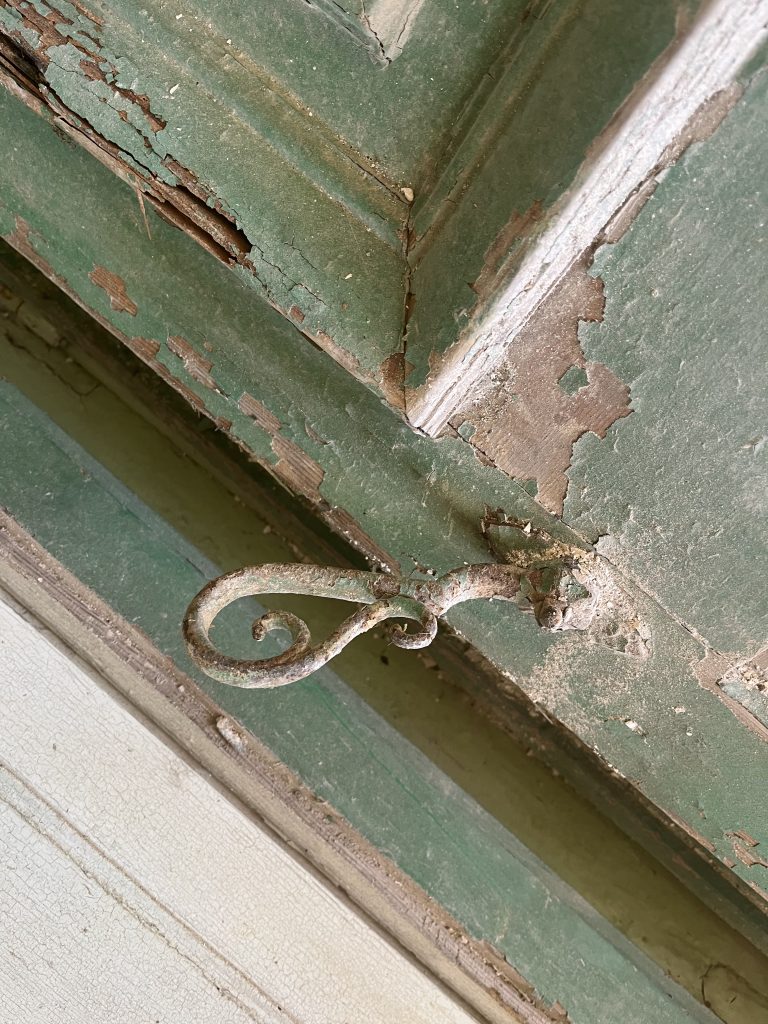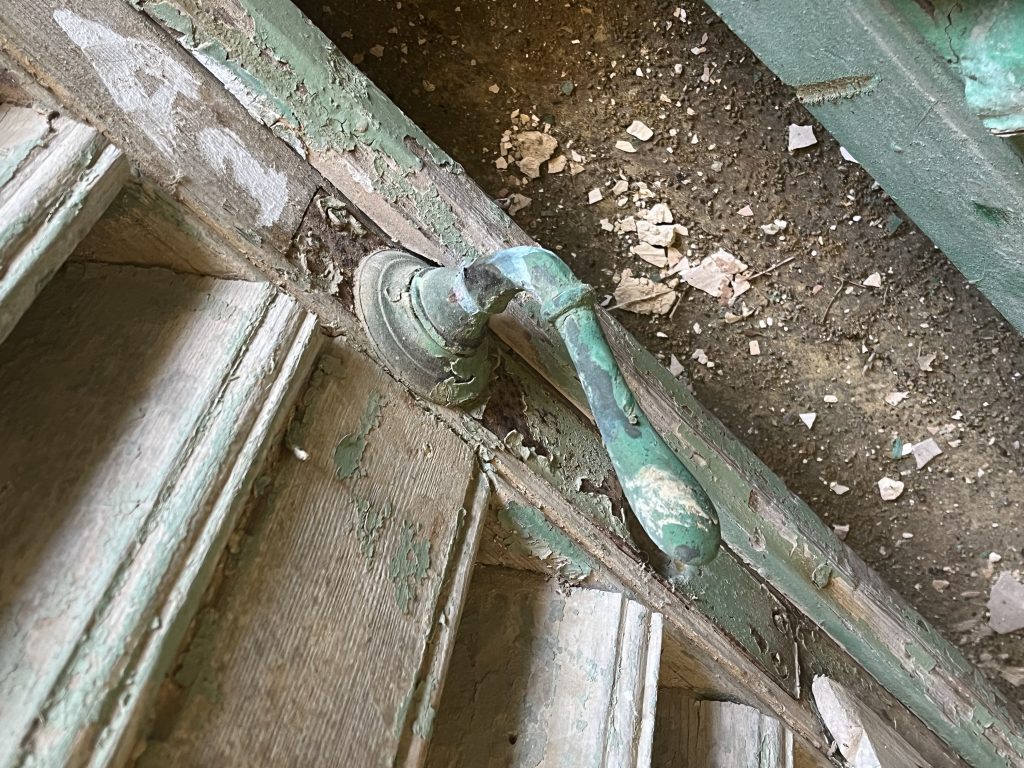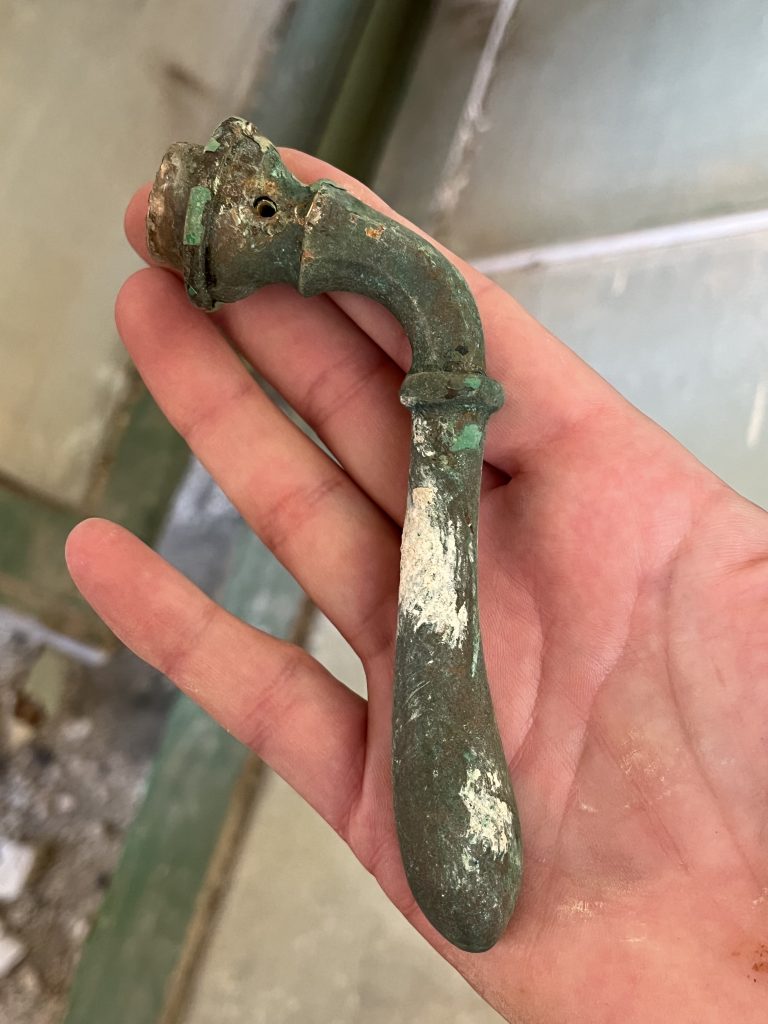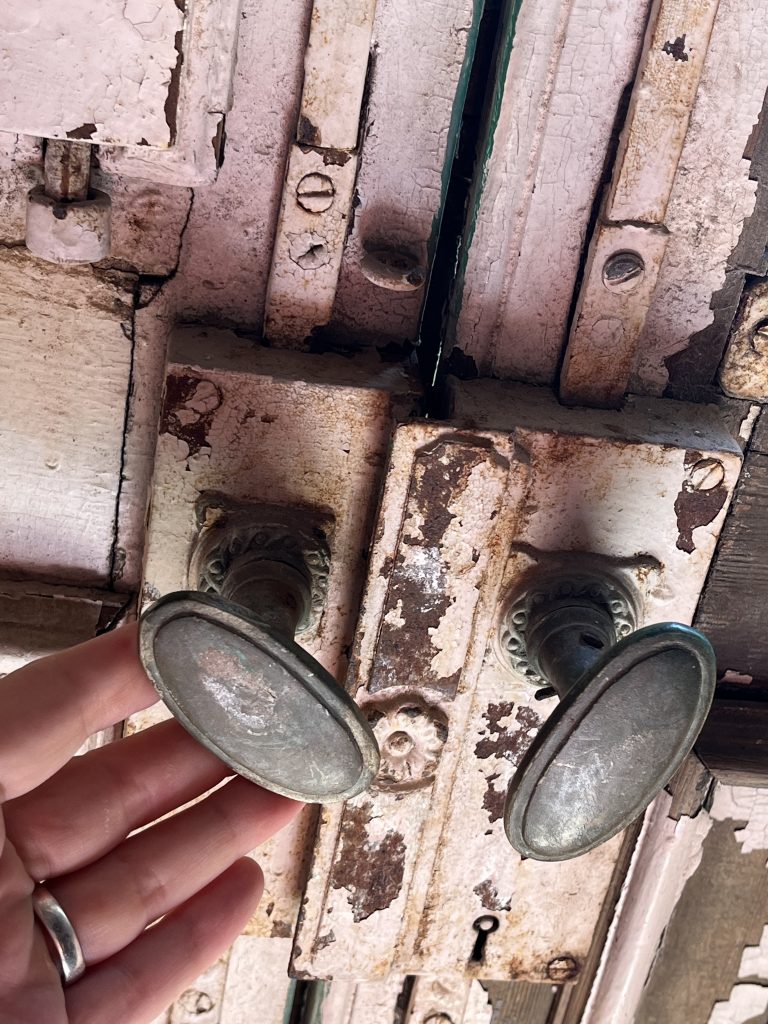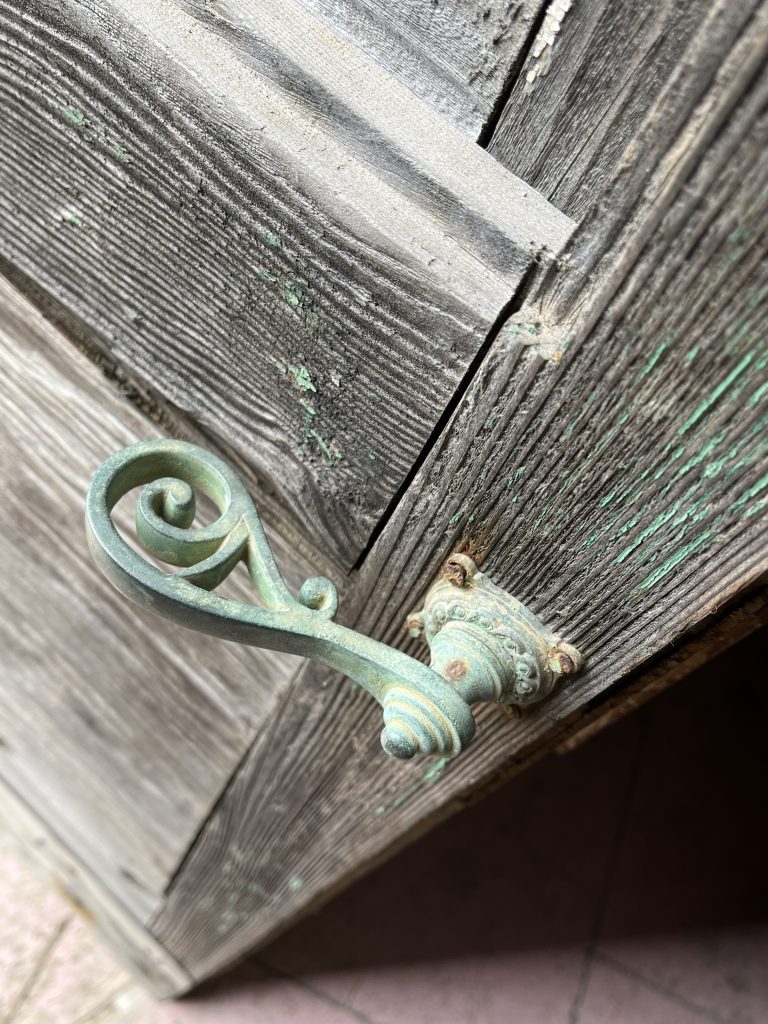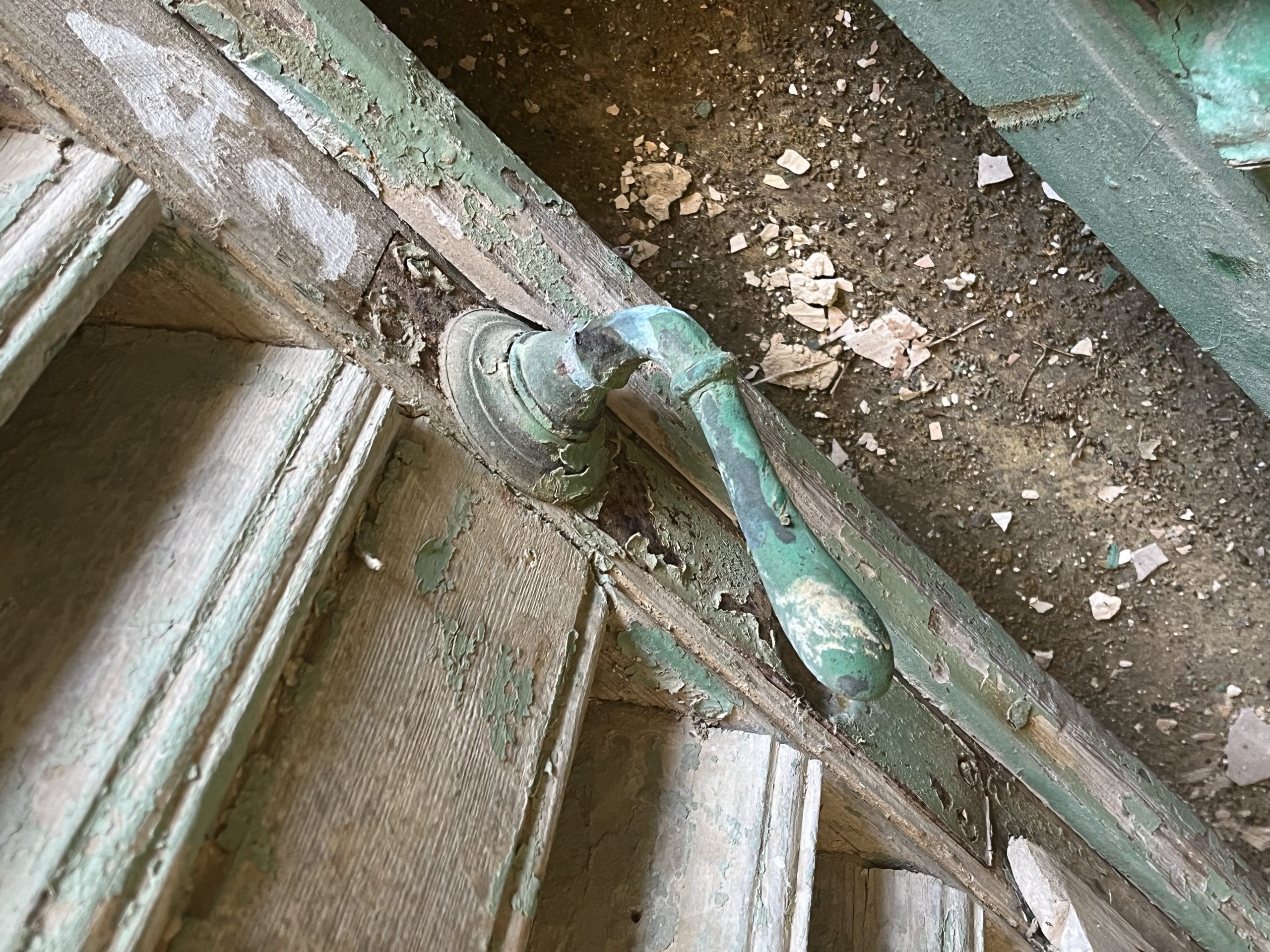
07 Apr Fittings and Handles
With our scrupulous approach to every finishing detail, today, we would like to introduce you to the original designs of hinges and handles preserved in Villa Luginsland. Like most decorative elements from when the villa was built (between 1887 and 1889), the door fittings were ornamental to harmoniously complement its overall decor. Historically, it may be worth noting that the 1840s and 1850s saw a trend towards simple yet elegant patterns. There was a shift towards minimalist forms, which still delight the eye with their graceful modesty.
The locks and fittings ranged from decorative to slightly more modest, affixed to one side of the door or, in formal rooms, adorned with ornate brass handles and plates. For windows, latches were used to secure the top and bottom. Several patterns in the villa employed mechanisms patented around 1855.
It is especially noteworthy to point out the more ornate designs that adorned the first formal floor of the villa and the private rooms on the second floor, all decorated in Victorian style. Queen Victoria’s reign, commencing in 1837, heralded a significant era in interior decoration history, particularly in accessories and finishes.
The handles and knobs were crafted from brass or bronze, either gilded or left uncoated. In the entrance doors, the keyhole was positioned next to the knob, with a separate keyhole cover, contrasting with later recessed locks where the keyhole was placed beneath the knob, enclosed by a single external plate. These designs gained popularity and remained in fashion throughout the 19th century.
Here, at Villa Luginsland, we focus on every minute detail, reconstructing each handle and fitting. The surviving designs are subject to an arduous replication process, creating moulds and casts from the original parts.


